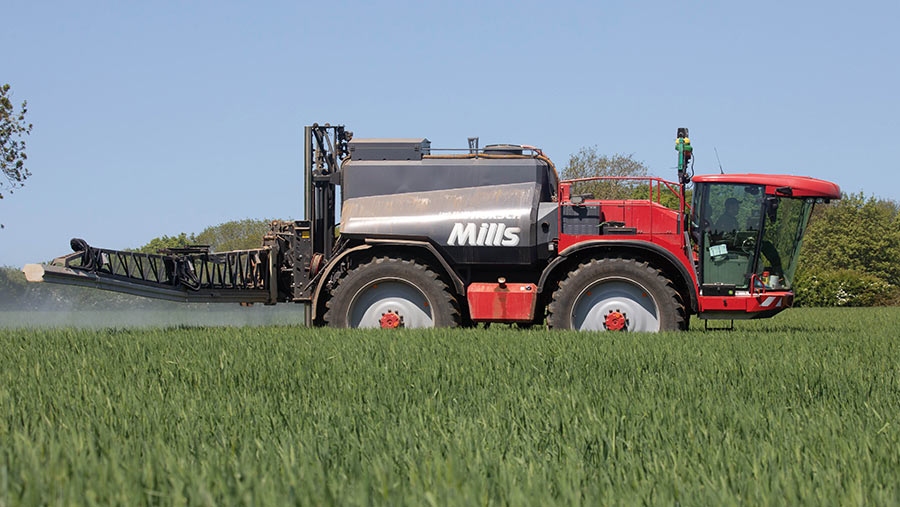Growers advised to use mixes for winter barley disease this spring
 © Tim Scrivener
© Tim Scrivener Barley growers are being advised to go with robust fungicide mixes this spring, where the combination of forward crops and presence of disease could lead to a high disease pressure season.
Crops are generally looking good and winter crops are well tillered, and failing to get on top of early diseases could prove costly, especially with the stronger barley prices.
See also: Soil carbon: Targets and how to store it in arable fields
Mildew, rhynchosporium, net blotch and brown rust have all been seen in winter barley fields, says SRUC cereal disease specialist Fiona Burnett, who adds that the humid conditions caused by the lush, forward canopies will let them thrive.
David Cains, head of agrochemical division for Simpsons Malt adds that there are rusts in the hybrid winter barleys.
With this spread of disease, Prof Burnett says there is the argument for using a spread of chemistry to hit them.
In addition, she adds that there is a trend to see more net blotch because of an underlying erosion of fungicide sensitivity. “So is another argument for using a mix in barley.”
T1 spray
Looking at the upcoming T1, it’s all about protecting yield.
“The aim is to protect tillers and maximise grain sites. Crops are well tillered this spring, so you don’t want to lose this potential,” she says.
The good news for growers is that they have more choice. “Siltra (bixafen + prothioconazole), has been the go to product in the past.”
But this year, there is Ascra (bixafen + fluopyram + prothioconazole) and Revystar (fluxapyroxad + mefentrifluconazole) is also a recent introduction.”
Ascra has brought more yield, giving a benefit over the previous standard Siltra. It also performed well with rhynchosporium.
Bayer’s commercial technical manager for southern Scotland, Craig Simpson, recommends using Ascra at T1, as its only approved for a single application in a season.
But if ramularia is a concern then he suggests using it at the T2 timing in winter barley.
Prof Burnett adds that if using an azole/SDHI mix at the T2, then using a SHDI/strobilurin mix at the T1 would bring something else to the programme, giving that spread of products.”
Strobilurins are less effective on ramularia so it also fits better at the T1.
T2 spray
Looking ahead to the T2, this is more about ramularia control, especially in the spring crop, although Mr Cairns says still may need good rust activity for hybrids.
There are limited options for ramularia control. Revystar is useful in feed crops but has a cut-off of growth stage 45 for malting crops. This leaves prothiconazole, which is still offering some activity.
Adding folpet to otherwise robust programmes may help, although responses are erratic.
Both Mr Cairns and Mr Simpson say minimising crop stress is key for ramularia.
That’s why Mr Cairns avoids complex 6/7 way spray mixes, ensures crops are not nutritionally stressed, and has trialed biostimulants.

